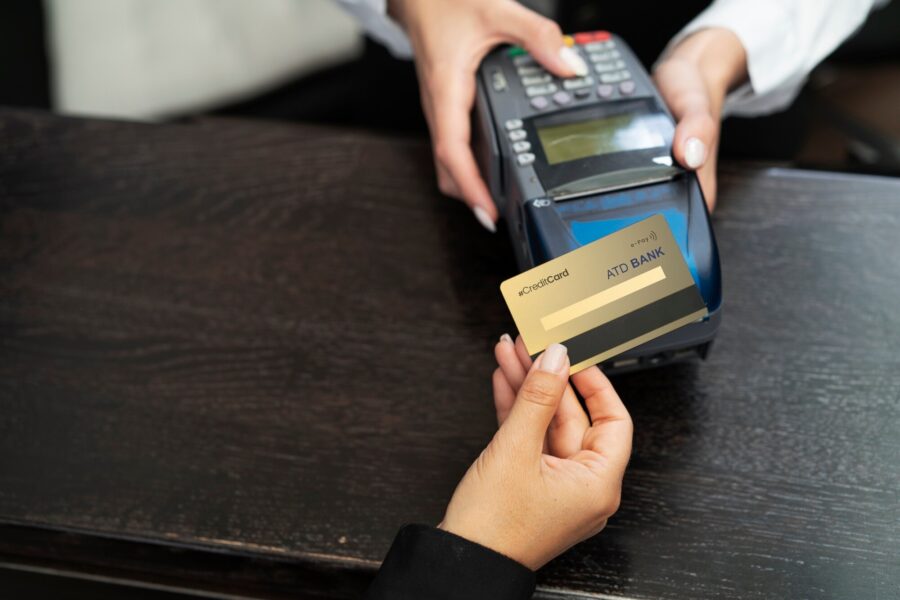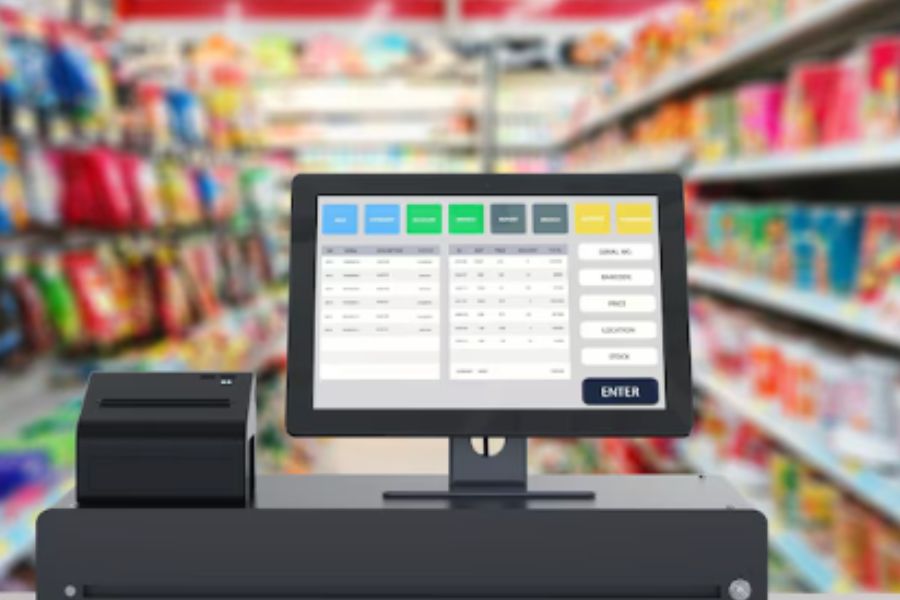Global retail sales have reached $28.2 trillion, with enterprises taking a significant share of this market. Large retailers manage multiple locations, oversee massive inventories, and serve millions of customers daily. But as they expand, challenges like stock discrepancies, inconsistent pricing, and disconnected sales data become more difficult to handle. A multi-store POS keeps operations in sync by aligning inventory, sales, and customer data across all locations. With the right system, businesses can maintain pricing consistency, improve efficiency, and create a seamless shopping experience. This article looks at the common challenges enterprises face as they scale and how a multi-store POS keeps everything on track.
The Role of Multi-Store POS in Enterprise Growth
A basic POS system can handle a single store, but managing multiple locations requires a more advanced approach. As enterprises expand, they need a system that keeps inventory, pricing, and sales data consistent across all stores. Without this, stock discrepancies, pricing mismatches, and operational inefficiencies can slow growth.
A multi-store POS is built for expansion, keeping everything connected as a business scales. With a centralized system, retailers can monitor stock levels across locations, adjust pricing and promotions in real time, and access sales data instantly. This level of control helps enterprises stay efficient, reduce errors, and make informed decisions without the bottlenecks of outdated or disconnected systems.
Not only that, a multi-store POS system can significantly improve the customer experience – the main factor deciding if you’re winning in today’s market. Shoppers expect a smooth transition between in-store and online purchases, and a multi-store POS keeps their purchase history and preferences synchronized. This makes order fulfillment, returns, and customer support far more efficient.
For enterprises looking to expand without operational chaos, a multi-store POS provides the structure needed to maintain control and drive profitability.
Roadblocks Enterprises Face When Scaling
Expanding to multiple locations brings new challenges that a standard POS system can’t handle. Without a system designed for growth, enterprises often struggle with:
- Inconsistent inventory tracking – When stock updates aren’t synchronized across locations, businesses risk overselling, stockouts, or surplus inventory that ties up capital. A disconnected system makes it difficult to transfer stock efficiently or fulfill orders from the nearest location.
- Lack of real-time data for decision-making – Sales, inventory, and customer data spread across different systems make it hard to spot trends or make timely adjustments. Without instant access to performance metrics, businesses can miss growth opportunities or react too slowly to market changes.
- Challenges in managing pricing, promotions, and staff – Running multiple stores means handling region-specific pricing, promotions, and workforce scheduling. A basic POS system often requires manual updates at each location, leading to inconsistencies and unnecessary workload.
- Disconnected online and offline sales channels – Customers expect a seamless experience no matter how they shop. When a business lacks a unified system, managing in-store pickups, returns, and hybrid shopping experiences becomes complicated, leading to frustrated customers and lost sales.
How Multi-Store POS Solves These Challenges for Enterprises
Managing multiple locations comes with logistical hurdles, but a multi-store POS keeps inventory, sales, and operations connected to prevent inefficiencies. We’ll go into the details now.
- Centralized Inventory Control
Real-time stock updates help prevent overselling and stock shortages. If one location runs low, staff can quickly check availability at other stores and arrange a transfer. This keeps inventory balanced across all branches, reducing unnecessary stockpiling and lost sales.
- Stronger Data and Analytics
Access to detailed sales reports and demand forecasting helps businesses spot trends and adjust strategies. With insights on top-selling products, seasonal demand, and store performance, retailers can refine pricing, promotions, and inventory planning.
- Simplified Multi-Branch Operations
Managing pricing and promotions across locations becomes more efficient when updates happen from a central system. Instead of adjusting prices or discount structures manually at each store, businesses can apply changes instantly across all branches. Workforce coordination also improves, as scheduling and performance tracking remain consistent across locations.
- Better Customer Experience
A connected system helps deliver personalized service by keeping track of customer purchase history across stores. If a shopper visits a different location or switches between online and in-store purchases, their preferences and past transactions remain accessible. This creates a smoother shopping experience, making it easier to handle returns, loyalty rewards, and personalized recommendations.
- Consistent Brand Experience Across Locations
Enterprises with multiple stores must maintain a unified brand identity. A multi-store POS helps standardize customer interactions, promotional messaging, and product availability, so every location aligns with the brand’s overall strategy.
- Automated Compliance and Reporting
Large businesses often deal with complex tax structures, regulatory requirements, and financial reporting across multiple regions. A multi-store POS automates tax calculations, generates detailed reports, and ensures compliance with local regulations, reducing administrative workload and minimizing errors.
- Improved Supplier and Purchase Order Management
Handling stock across multiple locations involves coordinating with suppliers efficiently. A multi-store POS streamlines purchase orders by tracking supplier performance, automating reordering, and consolidating procurement data in one place. This prevents supply chain disruptions and ensures stores remain stocked with in-demand products.
A multi-store POS keeps operations structured, preventing the bottlenecks that often come with expansion. With better inventory tracking, stronger data insights, and unified pricing, enterprises can scale without losing efficiency.
Seamless Integration with E-Commerce and Business Tools
For enterprises, not only physical stores are important, but e-commerce has become a primary revenue source for many of them. Thus, success would depend on how well online and offline operations work together. A multi-store POS connects with e-commerce platforms and essential business tools to keep everything aligned.
Syncing Online and Offline Sales
Inventory updates in real time across all sales channels, preventing overselling and fulfillment delays. A connected system keeps stock availability accurate across physical stores, websites, and mobile apps. This also streamlines buy-online-pick-up-in-store (BOPIS) and return processes, making transactions more flexible.
Connecting with CRM, Accounting, and Supply Chain Tools
Running multiple locations becomes more efficient when the POS system integrates with other business tools. CRM platforms track customer interactions, accounting software keeps financial records accurate, and supply chain systems simplify inventory restocking. With everything linked, businesses reduce manual work and minimize errors.
Fundamental POS Features to Support Enterprise Growth
A multi-store POS must be equipped with features that streamline operations, improve decision-making, and enhance the customer experience. But of course, there are hundreds of features an enterprise would require to match their distinctive operations. From our experience developing custom POS systems for large businesses, some features are indispensable for a long-term growth of these ’empires’.
Scalable Cloud-Based System – A cloud-powered POS keeps all locations connected, providing real-time access to sales, inventory, and customer data. With a centralized system, enterprises can manage multiple stores without relying on outdated, location-specific servers.
Advanced Inventory Management – Tracking stock across multiple locations becomes effortless with automated inventory updates, stock transfers, and low-stock alerts. A robust POS should also support multi-warehouse management, helping businesses distribute inventory efficiently across stores.
Comprehensive Sales and Performance Reporting – Enterprises need clear insights to drive growth. A strong POS provides in-depth analytics on sales trends, store performance, and customer behavior. Customizable reports make it easier to identify revenue-driving products and optimize business strategies.
Flexible Pricing and Promotions Management – Running discounts, loyalty programs, and region-specific pricing requires a system that supports flexible pricing structures. A multi-store POS should enable businesses to schedule promotions, apply bulk discounts, and adjust pricing across locations instantly.
Seamless Omnichannel Integration – Customers expect a unified shopping experience across physical stores, websites, and mobile apps. A POS that syncs online and offline sales ensures accurate stock availability, supports in-store pickups, and simplifies return processes.
Staff Management and User Permissions – Large businesses require structured employee access. A POS with role-based permissions ensures that managers, cashiers, and warehouse staff have the access they need without compromising sensitive business data. Additionally, built-in time tracking and performance monitoring help optimize workforce management.
Multi-Store Payment Processing – A POS should support multiple payment methods, including credit cards, mobile wallets, and contactless payments. Enterprises operating in different regions may also need multi-currency support and automated tax calculations to simplify transactions.
Third-Party Integrations – A POS must connect with essential business tools such as accounting software, CRM systems, and supply chain platforms. With seamless integrations, businesses avoid manual data entry, reduce errors, and keep all departments aligned.
ConnectPOS: The Enterprise POS Solution for Multi-Store Management
ConnectPOS is a leading cloud-based POS built to support enterprises managing multiple stores and sales channels. With a strong presence in retail, F&B, and service industries, it powers brands like Jim Thompson, Yeti, KidZania, Lapaire, and Adore Beauty, ensuring seamless operations across locations.
The system offers real-time inventory tracking, centralized data management, and flexible pricing controls, allowing businesses to maintain consistency while scaling effortlessly. Its omnichannel capabilities connect in-store and online sales, delivering smooth order fulfillment, returns, and customer interactions.
Besides core POS functions, ConnectPOS integrates with CRM, accounting, and supply chain tools, reducing manual work and improving efficiency. With customizable features and a user-friendly interface, enterprises gain full control over their operations without unnecessary complexity.
For businesses looking to expand, ConnectPOS delivers the agility, reliability, and insights needed to grow without operational setbacks.
Conclusion
Connectivity is the foundation of enterprise growth. A multi-store POS bridges the gap between locations, turning separate stores into a unified operation. Inventory stays balanced, pricing remains consistent, and customer data flows seamlessly across all touchpoints.
With everything working together, businesses can spot trends faster, adjust strategies in real time, and expand without operational headaches. Instead of managing stores individually, they can focus on big-picture growth, knowing every location runs as part of a well-connected system. Expansion becomes a strategic move, not a logistical challenge.
Ready to scale without complications? ConnectPOS keeps your stores in sync, so you can focus on growth, not operational roadblocks. Get in touch today to see how a unified POS can drive smarter expansion for your business.



